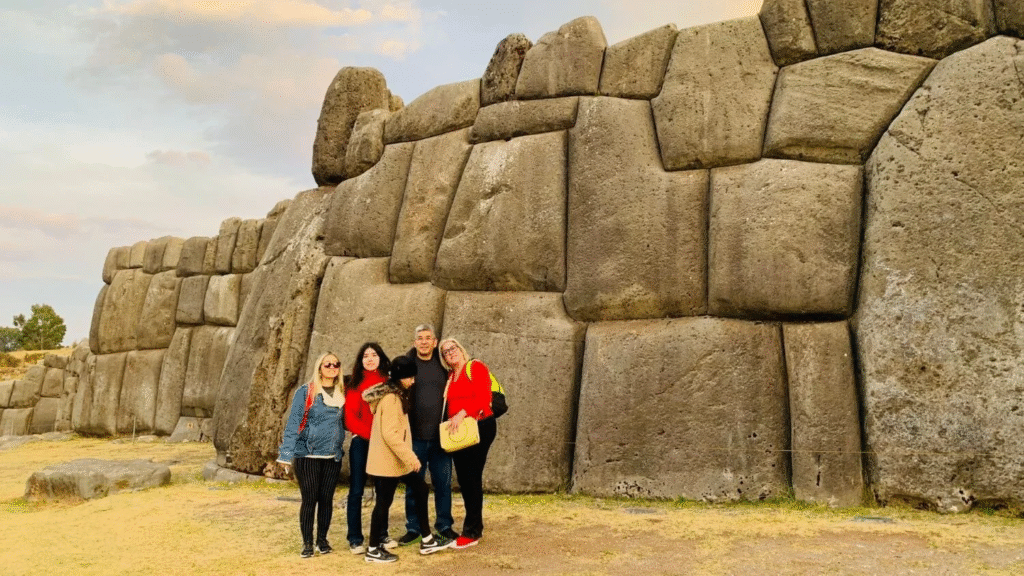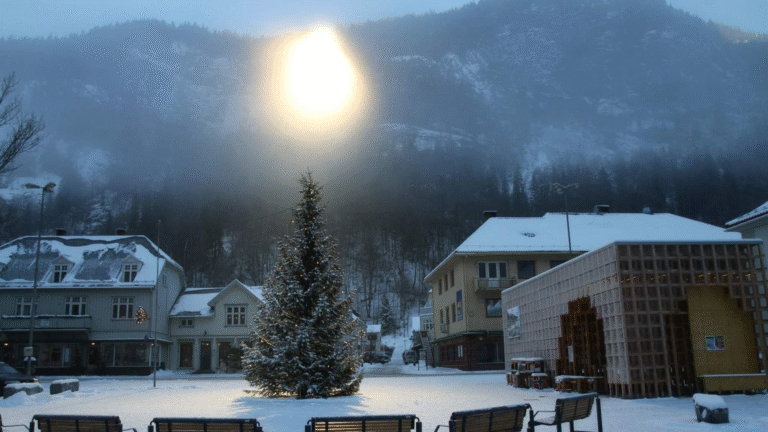
Nestled high in the Peruvian Andes, overlooking the ancient capital of Cusco, lies one of the greatest architectural and engineering achievements of pre-Columbian America—Sacsayhuamán. This awe-inspiring complex, perched at an elevation of approximately 3,700 meters above sea level, stands not only as a testament to the power and ingenuity of the Inca civilization but also as a symbol of spiritual depth, military strength, and architectural sophistication.

Origins and Historical Significance
The construction of Sacsayhuamán is attributed to the 15th-century Inca emperor Pachacutec, a visionary ruler responsible for transforming the Inca kingdom into a sprawling empire. Later, emperors such as Tupac Yupanqui and Huayna Capac continued the site’s expansion. Though often labeled a “fortress,” the structure served multiple purposes: military defense, ceremonial worship, and imperial demonstration.
Its placement and strategic height above Cusco enabled it to oversee and protect the city, which itself was designed in the shape of a sacred puma—an animal revered by the Inca. Sacsayhuamán was the “head” of this cosmic puma, merging symbolism and functionality in a remarkable union.

Architectural Genius and Monumental Masonry
What sets Sacsayhuamán apart from any ordinary fortress or ceremonial site is its cyclopean stonework. The three-tiered, zigzagging walls stretch over 400 meters, some rising over 6 meters tall. The most astonishing aspect of the walls is the precision of their construction.
Each massive stone—some weighing over 100 tons—is carved so meticulously that no mortar was necessary. The stones interlock like puzzle pieces, some with as many as 12 angles, fitting together so precisely that not even a blade of grass can slide between them. The largest blocks, estimated at up to 200 tons, were transported from quarries located over 20 kilometers away—without wheels or modern tools.
The technique, which remains largely a mystery, involved ingenious use of manpower, wooden sleds, levers, and ramps. Despite the enormous weight and size of the stones, the Incas achieved a level of craftsmanship and seismic resilience that modern engineers continue to study and admire.
Engineering Without Machines: How the Stones Were Moved
The absence of the wheel in Andean society challenges modern understanding of how such vast stones were transported and placed. The prevailing theory suggests the Incas used a combination of wooden rollers, sledges, and inclined planes. Hundreds of workers would drag each block along prepared paths, coordinating through communal labor systems known as mit’a.
In addition, the stones were shaped using simple but effective tools—mainly bronze chisels and harder stones that functioned as hammers and abrasives. This labor-intensive process might have taken years, even decades, per section.
A unique theory proposes that the walls were pre-designed with “slots,” and the stones were shaped in such a way that they would slide and lock into these cavities—much like Tetris pieces. Whether or not this theory holds universally, what remains undeniable is the deliberate design, perfect placement, and massive scale of each block.
Seismic Stability and Structural Design
Located in a seismically active zone, Sacsayhuamán has endured countless earthquakes over the centuries. Remarkably, while Spanish colonial buildings crumbled repeatedly during tremors, the Inca walls stood firm.
This resilience is no accident. The trapezoidal shapes, inward-slanting walls (known as battering), and interlocking stones all contribute to an architectural system designed to absorb and dissipate seismic energy. The absence of mortar, often seen as a weakness, is in fact a strength—allowing the walls to “breathe” and shift slightly during tremors without collapsing.
This feature of earthquake engineering, far ahead of its time, shows the deep understanding Inca builders had of both geology and structural behavior.

Symbolism and Sacred Geometry
Sacsayhuamán is more than an engineering triumph—it is a deeply symbolic and spiritual site. The zigzag pattern of the walls is believed to represent lightning, a powerful element in Andean mythology associated with the thunder god Illapa. This reinforces the spiritual function of the complex, especially during ceremonies honoring the sun (Inti), moon (Mama Killa), and earth (Pachamama).
The site’s alignment with astronomical events, as well as its connection to the layout of Cusco, further reveals the Incas’ mastery of sacred geometry. The structure was not randomly placed; it was integrated into the natural and celestial world in ways that strengthened the spiritual resonance of the entire city.
Ceremonial and Military Duality
Though fortified and used in military conflicts, including during the 1536 rebellion led by Manco Inca against the Spanish, Sacsayhuamán primarily functioned as a ceremonial center. Large plazas, open terraces, and temples within the site hosted major rituals, including the Inti Raymi—the Festival of the Sun celebrated during the winter solstice.
During battles, however, the elevated platforms provided tactical advantages. Defenders would roll stones down onto invading forces or take cover behind the complex’s angular walls. Thus, Sacsayhuamán served both spiritual and strategic purposes, reinforcing its central role in Inca society.
Destruction and Preservation
Following the Spanish conquest, large portions of Sacsayhuamán were dismantled. Many of its finely-cut stones were repurposed to build colonial-era churches, cathedrals, and residences in Cusco. Only the stones deemed too heavy to move remain at the site.
Yet, despite centuries of plunder and natural erosion, what remains is still majestic enough to evoke awe. Ongoing archaeological efforts aim to preserve the site and unearth deeper insights into its design, history, and symbolic meaning.
Modern-Day Role and Cultural Revival
In contemporary Peru, Sacsayhuamán continues to be a focal point of national pride and identity. It is the ceremonial heart of modern Inti Raymi festivals, held every June 24, where thousands of people—many in traditional Inca dress—gather to celebrate the solstice, honor the sun god, and relive the rituals of their ancestors.
The site is also a popular destination for travelers, historians, and spiritual seekers. With panoramic views of Cusco, open plazas for yoga and tai chi, and interpretive trails, Sacsayhuamán merges past and present into one living experience.
Fascinating Facts and Stats
- Elevation: 3,701 meters above sea level
- Area: Nearly 3,000 hectares
- Wall Length: Over 400 meters in some sections
- Stone Weights: Between 70 to 200 tons
- Transportation Distance: Up to 22 kilometers
- Materials Used: Limestone and andesite
- Survived Earthquakes: Multiple major events over 500 years
Why Sacsayhuamán Still Stands Apart
Sacsayhuamán is not simply a ruin—it is a monument of human achievement that transcends time. Its enduring stones whisper of a civilization that valued harmony with nature, community-driven labor, and sacred purpose in design.
While modern machinery might replicate such feats today, the Incas did it with their bare hands, minds, and communal will. The precision of their geometry, the resilience of their engineering, and the spiritual symbolism infused in every stone continue to inspire awe and admiration.
Conclusion: Echoes of Eternity in Stone
Sacsayhuamán is a masterpiece that defies gravity, time, and even logic. It is a rare combination of architectural genius, spiritual depth, and historical resilience. Visiting it is like stepping into the soul of a civilization that dared to build not just for the present, but for eternity.
For anyone who seeks to understand the heights of human creativity, the mysteries of ancient engineering, or the spiritual roots of architecture—Sacsayhuamán offers lessons carved in stone and stories waiting to be uncovered.






